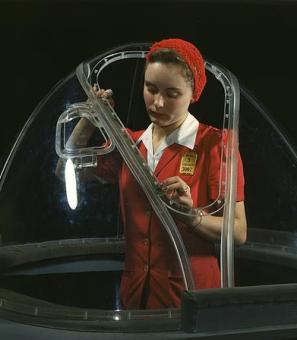How Chinatown's Friendship Archway Came To Be
The Spirit of the Friendship Archway
Not like the olden times where hatred flamed
Where folks failed to forgive and pain endured,
A Mighty Spirit with a love that cures
Has come to Washington, to us explain,
To help us realize a dream so named,
To learn and serve through Chinese joint ventures;
Gifts of good will and faith with overtures
The Friendship Archway Spirit now proclaims!
"Give us your thoughts, your wisdom and your cheer
And we give you what you desire to find.
Let’s build a world that sees no need for fear
With Sister Cities’ love, let us be kind.
Let's share our strengths, exchange our best for years,
For friendship we invest, the tie that binds."
By Dwan L.Tai, Ph.D., September 18, 1986 (first published in Asian Voice, Nov. 1986)[1]
In addition to tours of the Great Wall and the Ming Tombs, former D.C. mayor Marion Barry’s trip to China in May 1984 involved talks with Beijing mayor Chen Xitong about constructing a symbol of the friendship between the two capital cities in the form of an archway in D.C.’s Chinatown.[2] The agreement was formalized when both mayors signed an accord declaring the District and Beijing as Sister Cities as part of China’s efforts to open up to the Western world.[3]
The following year, plans for the archway became more definite, and Barry and Chen decided that each city would contribute $500,000 for its construction. The District of Columbia hired architect Alfred Liu, who was also chairman of the Chinatown Development Corporation, to design the structure.[4] The archway would not be the first of its kind; Chinese diaspora communities in San Francisco, Boston, and Philadelphia also put up archways “not just to commemorate cultural nostalgia and belonging in the host country but also to make explicit connections to a rising China and its attendant economic and political implications.”[5]
Beginning in the early 1980s, Chinese Communist Party leader Deng Xiaoping implemented a series of economic reforms, and “The policy of opening up to the outside world...brought a significant expansion of economic, technological, and trade relations with other countries.”[6] As Mariah Burton Nelson recounted in the Washington Post, the burgeoning friendship between Beijing and D.C. involved “sending over Howard University jazz combos, soccer players and photo exhibits, and hosting Chinese song and dance troupes, interns, and exchange students.”[7]
While many younger Chinatown residents looked forward to the new addition to the neighborhood, the older generation tended to be more critical. A local Chinese American journalist said of this divide, “we have two groups. One is the older generation. They have a very close relationship with Taiwan. . . . The other group is younger. They are American citizens and they think this is our country, so whether it's China or Taiwan doesn't make any difference."[8] Lawrence Locke, Chinatown’s unofficial mayor at the time, expressed his dismay at the city’s decision to build an archway that, to him and many others, symbolized ties to a communist country. He declared, "We oppose the erection of a communist archway in Chinatown because we do not know what they will write on it… [and the archway] might misidentify the local Chinese community with the Chinese communists."[9]
Locke was the chairman of the Chinese Consolidated Benevolent Association, a group made up of several organizations that acted as the “voice” of Chinatown and made many of its major decisions. According to its critics, the association was also “heavily influenced by the government of Taiwan,” which could explain why it opposed the Friendship Archway so vehemently.[10] Although Liu insisted that the arch “does not bear any political statement,” Locke created a petition protesting the project which got more than 50 signatures. The CCBA also began raising money to build a separate archway west of 5th Street that would have no connection to mainland China or the Communist Party.[11]
Despite the pushback from some community members, construction began in June 1986 with the frame and supporting pillars at Seventh and H Street N.W. Because of traffic on H Street during the day, a lot of the work had to be done at night. Certain parts of the archway, like the seven roofs evocative of Chinese pagodas and the dou gong supports underneath them, were built in China and then installed in Washington. The structure had a total of 7,000 red, gold, blue, and green tiles, and the finishing touches included 272 painted dragons and gold foil, a material so fragile that it had to be applied using bamboo sticks rather than human hands.[12] The design was inspired by architecture from the Ming and Ching dynasties, when royals favored elaborate arches.[13]
After months of arduous work, the Friendship Archway was completed in November, and the city of D.C. held a dedication ceremony to celebrate the occasion. The festivities showcased Chinese culture through firecrackers, lion dances, and music. During the ceremony, Councilman John Wilson announced, “The archway is a symbol of our ties to our sister city, but also to our ties to Chinatown.”[14]
Not everyone at the ceremony was there to show support, however. About 20 Chinese-American protesters gathered peacefully with a banner reading “No Communist Archway in Chinatown.” The CCBA’s plan to construct another archway was still in development at the time, but one of the demonstrators, Lichien Chen, a businessman from Virginia, told Mercury News, "We are going to try and put up a gateway to Chinatown that would be quite different. It would be paid for with contributions, not by governments.”[15]
The CCBA raised money for several years, but in 1988, chairman William K. Mak divulged that the association planned to move in a different direction. He explained that some members felt that, "since it would take so much money, maybe the money can be used for something more useful for the people."[16]
Today, only the Friendship Archway is the only one of its kind in Chinatown. Even though the landscape has changed quite a bit since the days when, according to American University lecturer Easten Law, “All you saw was the archway. The archway and the sky," the structure still acts as a marker of the neighborhood’s distinct heritage.[17]
Footnotes
- ^ “The 2021 Friendship Archway Conversations,” Allies Building Community, Inc., accessed November 24, 2021, http://www.archway2.org/.
- ^ “Washington, D.C., Mayor Marion Barry took a break today…,” UPI (USA), May 16, 1984, https://infoweb-newsbank-com.dclibrary.idm.oclc.org/apps/news/document-….
- ^ Ibid.
- ^ Mariah Burton Nelson, “Where East Meets West [FINAL Edition],” Washington Post, September 16, 1988, https://www.proquest.com/docview/307074106/32A122EE82AD45F1PQ/3. John DeFerrari, “The story of how DC’s Friendship Archway in Chinatown came to be,” Greater Greater Washington, September 26, 2018, https://ggwash.org/view/69245/the-story-and-meaning-behind-chinatowns-f….
- ^ Evelyn Khoo, “Under The Arch of Friendship: Culture, Urban Redevelopment and Symbolic Architecture in D.C. Chinatown, 1970s-1990s” (Masters Thesis, University of Maryland, 2009), 58-60.
- ^ “The People's Republic Of China: V,” University of Maryland, accessed December 1, 2021, http://www.chaos.umd.edu/history/prc5.html.
- ^ Burton Nelson, “Where East Meets West.”
- ^ Caryle Murphy, “Arch Plan Widens D.C.-Chinatown Rift,” Washington Post, July 31, 1984, https://www.washingtonpost.com/archive/local/1984/07/31/arch-plan-widen….
- ^ Ibid.
- ^ Ibid.
- ^ Ibid. DeFerrari, “The story of how DC’s Friendship Archway in Chinatown came to be.”
- ^ DeFerrari, “The story of how DC’s Friendship Archway in Chinatown came to be.” Burton Nelson, “Where East Meets West.”
- ^ Burton Nelson, “Where East Meets West.”
- ^ “Gateway of Dissension Chinese Archway Draws Protest,” Mercury News, November 21, 1986, 42E.
- ^ Ibid.
- ^ Burton Nelson, “Where East Meets West.”
- ^ Yanan Wang, “Is Chinatown Finished?,” Washington Post, July 17, 2015, C1.


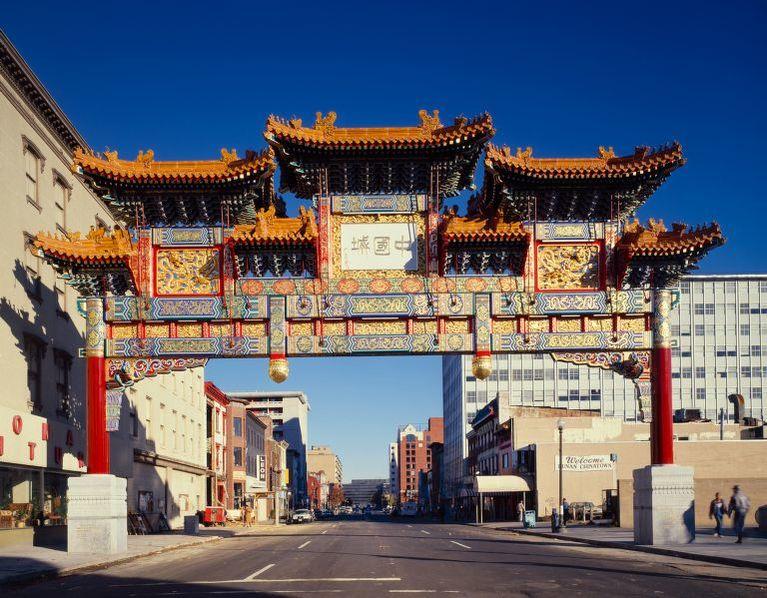
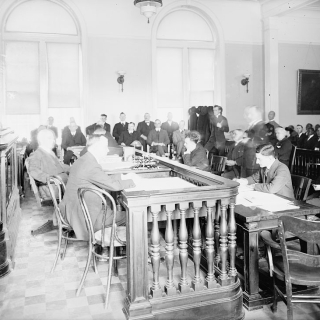
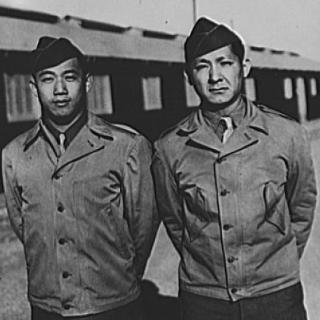
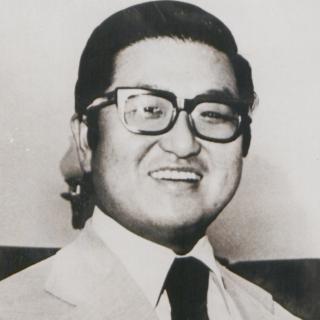
![Sketch of the mythical fuan by Pearson Scott Foresman. [Source: Wikipedia]](/sites/default/files/styles/crop_320x320/public/2023-10/Goatman_Wikipedia_Faun_2_%28PSF%29.png?h=64a074ff&itok=C9Qh-PE1)











